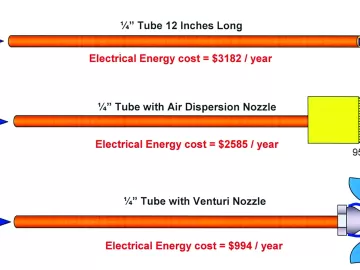Don’t Assume Compressed Air Demand Reductions Provide Proportional Energy Savings
The purpose of this article is to show there isn’t always a proportionally linear relationship between what happens with flow reductions on the demand side of a compressed air system - and what happens with the energy consumption in the air compressor room. Optimizing an entire compressed air system requires precise knowledge of the supply side, how compressed air is used in the process itself and how those two relate together.












